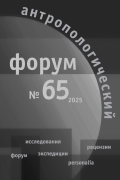The Cross and the Pudenda: On the Polemics about the Late 15th Century “Novgorod Heretics” and the History of Apotropaic Magic
DOI:
https://doi.org/10.31250/1815-8870-2025-21-65-11-36Keywords:
heresy of the Judaizers, Christian amulets, bawdy badges, images of genitalia, beliefs about the evil eyeAbstract
Among the controversial episodes of Russian religious history is the persecution of the so-called “heresy of the Judaizers” in the late 15th century. The writings of Archbishop Gennadiy Gonzov and Iosif Volotskiy against the “new heretics” can be at least in part interpreted as an “invention” of a religious movement that did not exist in reality. The examples of “blasphemy” discussed in Gennadiy’s epistles generally fit well into the practices of medieval Christianity, where widely understood iconoclasm was often a natural component of the worship of sacred images. The article offers a new interpretation of an example that the archbishop used to prove the iconoclastic sentiments of the “Novgorod heretics”. It tells about a body cross made of a “plakun tree” with the image of male and female genitalia, which a priest from the Oyat river handed to one of his parishioners. The case has been discussed by scholars as related to love or fertility magic. However, it is more likely that the cross from Oyat was an apotrope, since it has quite numerous analogies among Western “bawdy badges” and pilgrims’ amulets. The article discusses the genesis and meaning of this tradition, as well as the history of “genital” symbolism in the context of beliefs about the evil eye.

